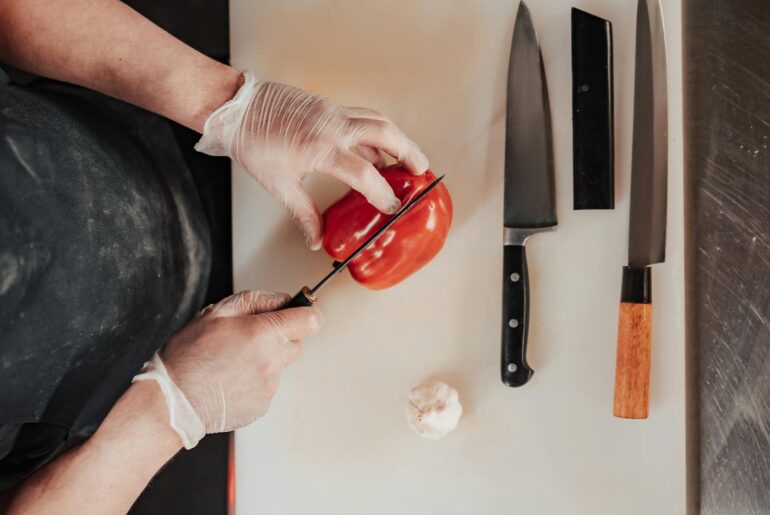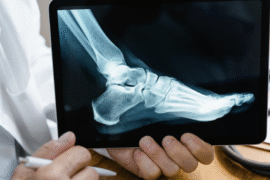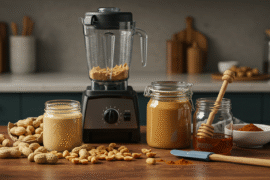This article may contain references to products or services from one or more of our advertisers or partners. We may receive compensation when you click on links to those products or services. Nonetheless, our opinions are our own.
The information presented in this article is accurate to the best of our knowledge at the time of publication. However, information is subject to change, and no guarantees are made about the continued accuracy or completeness of this content after its publication date.
- The Best Kitchen Knives to Buy for Every Cooking Style and Budget
- How Cooking Style Influences the Ideal Knife Selection
- Key Knife Types and Their Best Uses
- Quality Knives for Modest Budgets
- High-End Kitchen Knives: The Value of an Investment
- Care and Maintenance for Knife Longevity
- How to Handle Knives Safely and Effectively
- Frequently Asked Questions
- Recommended Reads
The Best Kitchen Knives to Buy for Every Cooking Style and Budget
A well-chosen kitchen knife is more than just a tool—it becomes an extension of the cook’s hand, transforming ingredients with grace and precision. Whether preparing weeknight meals, crafting baked delicacies, or experimenting with intricate culinary techniques, the right knife enhances the entire cooking experience. With countless options available—from modestly priced essentials to premium blades favored by professionals—navigating the market can be overwhelming.
How Cooking Style Influences the Ideal Knife Selection
Understanding cooking habits is fundamental when selecting kitchen knives that feel purposeful and enduring. The frequency of meal preparation, the complexity of dishes, and the types of ingredients used all influence what kind of blades will prove most useful.
Those who favor hearty grilling sessions may benefit from knives that make quick work of trimming meats. Baking enthusiasts, on the other hand, might appreciate the finesse of a delicate serrated edge. Precision-focused cooking styles call for highly responsive blades that balance control and sharpness.
Popular Cooking Styles and Their Matching Knives:
- Baking: A serrated bread knife for clean cuts through crusty loaves and a nimble paring knife for decorative or detailed work
- Grilling & Butchery: A chef’s knife for general prep and a boning knife for separating meat from bone
- Everyday Cooking: A utility knife or an 8-inch chef’s knife for effortless slicing and chopping
- Fine Knife Work: Japanese-style blades such as a santoku, nakiri, or gyuto for clean, intricate cuts
A thoughtful approach starts with one or two multi-purpose knives and expands over time as needs evolve.
Key Knife Types and Their Best Uses
Each kitchen knife has a defined role. Understanding these roles allows the cook to move more efficiently through their preparation, reducing effort while enhancing precision.
Essential Knife Types to Know:
- Chef’s Knife: A versatile workhorse, ideal for chopping vegetables, slicing meat, and mincing herbs
- Paring Knife: Excellent for peeling, coring, and tasks requiring control over fine detail
- Serrated Knife: Cuts cleanly through bread, tomatoes, and citrus fruits without crushing
- Utility Knife: A flexible mid-sized option, bridging the gap between chef’s and paring knives
- Boning Knife: Features a narrow, flexible blade ideal for working around bones or filleting fish
Voted "Best Overall Budgeting App" by Forbes and WSJ
Monarch Money helps you budget, track spending, set goals, and plan your financial future—all in one app.
Get 50% OFF your first year with code MONARCHVIP
Quality Knives for Modest Budgets
High performance doesn’t always demand a high price. Several brands have earned acclaim for offering affordable knives that retain sharpness, feel balanced in the hand, and resist wear from frequent use.
Recommended Affordable Options:
- Victorinox Fibrox Pro Chef’s Knife – Praised for its ergonomic handle and easy maintenance, this knife offers superb value and dependable quality
- Mercer Culinary Millennia Chef’s Knife – Designed with high-carbon steel and a textured grip, it suits culinary students and everyday cooks alike
- OXO Good Grips Chef’s Knife – A reliable blade with a soft, comfortable handle, perfect for daily use without fatigue
These options offer reliable performance while maintaining affordability, making them ideal for building a foundational knife set.
High-End Kitchen Knives: The Value of an Investment
For those who cook frequently or appreciate refined craftsmanship, high-end kitchen knives bring both beauty and precision to the kitchen. These blades are forged with premium materials, honed for edge retention, and designed for ergonomic excellence.
- Superior Durability – Crafted from high-carbon alloys, these knives resist corrosion and maintain sharpness over extended use
- Enhanced Balance – Thoughtfully designed for fluid motion, premium knives reduce fatigue during long cooking sessions
- Elevated Control – The weight, shape, and edge geometry offer unmatched responsiveness and accuracy
| Feature | Premium Knives | Mid-Range Knives |
|---|---|---|
| Blade Composition | High-carbon stainless steel | Basic stainless steel |
| Edge Longevity | Maintains edge for years | It may be dull after months |
| Balance | Precision-weighted | Often inconsistent |
| Cost Estimate | $150+ | $30 – $120 |
Though the initial investment may be more significant, the return in performance, lifespan, and overall satisfaction can justify the cost, especially for those who value fine tools.
Care and Maintenance for Knife Longevity
To protect the integrity of a kitchen knife and extend its lifespan, proper maintenance is essential. Even the most well-forged blade requires care to preserve sharpness and prevent damage.
Knife Maintenance Recommendations:
- Hand-wash Only: Avoid dishwashers, which expose blades to harsh heat and detergent
- Dry Immediately: Wipe knives dry right after cleaning to prevent water damage or rust
- Use Honing Steel Regularly: Realign the blade edge every few uses to maintain sharpness
- Sharpen Periodically: Use a whetstone or professional service to restore the edge as needed
- Store Properly: Use a magnetic strip, wooden knife block, or blade guards to prevent nicks
A routine that includes cleaning, honing, and thoughtful storage ensures consistent performance and protects your investment.
How to Handle Knives Safely and Effectively
Proper technique not only improves kitchen efficiency but also reduces risk. Whether you’re a new cook or refining long-held habits, these foundational tips are worth remembering.
Key Usage Tips:
- Use a Proper Cutting Surface: Always cut on wood or plastic boards—never directly on countertops
- Hold with Confidence: Grip the handle firmly and use the other hand to guide food safely
- Keep Blades Sharp: A dull knife requires more force and is more likely to slip, increasing the chance of injury
- Never misuse Knives: Avoid twisting, prying, or using a knife to open cans or frozen items
- Store Responsibly: Protect yourself and your knives with safe, organized storage
Frequently Asked Questions
What should be considered when selecting a kitchen knife?
Focus on blade quality, handle comfort, weight, and balance. Think about the types of food you’ll be preparing most often.
Are high-end knives a worthy investment?
Yes, especially for frequent cooking. They offer greater longevity, performance, and satisfaction, but quality options exist at all price points.
What knives are considered essential?
A chef’s knife, paring knife, and serrated bread knife are generally sufficient for most kitchen tasks.
How often should a kitchen knife be sharpened?
Frequency depends on use, but a few times per year is typical for home kitchens. Honing between uses helps extend sharpness.
Is it better to buy a knife set or individual pieces?
Purchasing individual knives allows more flexibility and control over quality. Sets can be convenient but vary in overall value.

Reviewed and edited by Albert Fang.
See a typo or want to suggest an edit/revision to the content? Use the contact us form to provide feedback.
At FangWallet, we value editorial integrity and open collaboration in curating quality content for readers to enjoy. Much appreciated for the assist.
Did you like our article and find it insightful? We encourage sharing the article link with family and friends to benefit as well - better yet, sharing on social media. Thank you for the support! 🍉
Article Title: The Best Kitchen Knives to Buy for Any Cooking Style and Budget
https://fangwallet.com/2025/04/20/kitchen-knives-guide/The FangWallet Promise
FangWallet is an editorially independent resource - founded on breaking down challenging financial concepts for anyone to understand since 2014. While we adhere to editorial integrity, note that this post may contain references to products from our partners.
The FangWallet promise is always to have your best interest in mind and be transparent and honest about the financial picture.
Become an Insider

Subscribe to get a free daily budget planner printable to help get your money on track!
Make passive money the right way. No spam.
Editorial Disclaimer: The editorial content on this page is not provided by any of the companies mentioned. The opinions expressed here are the author's alone.
The content of this website is for informational purposes only and does not represent investment advice, or an offer or solicitation to buy or sell any security, investment, or product. Investors are encouraged to do their own due diligence, and, if necessary, consult professional advising before making any investment decisions. Investing involves a high degree of risk, and financial losses may occur including the potential loss of principal.
Source Citation References:
+ Inspo
There are no additional citations or references to note for this article at this time.












































